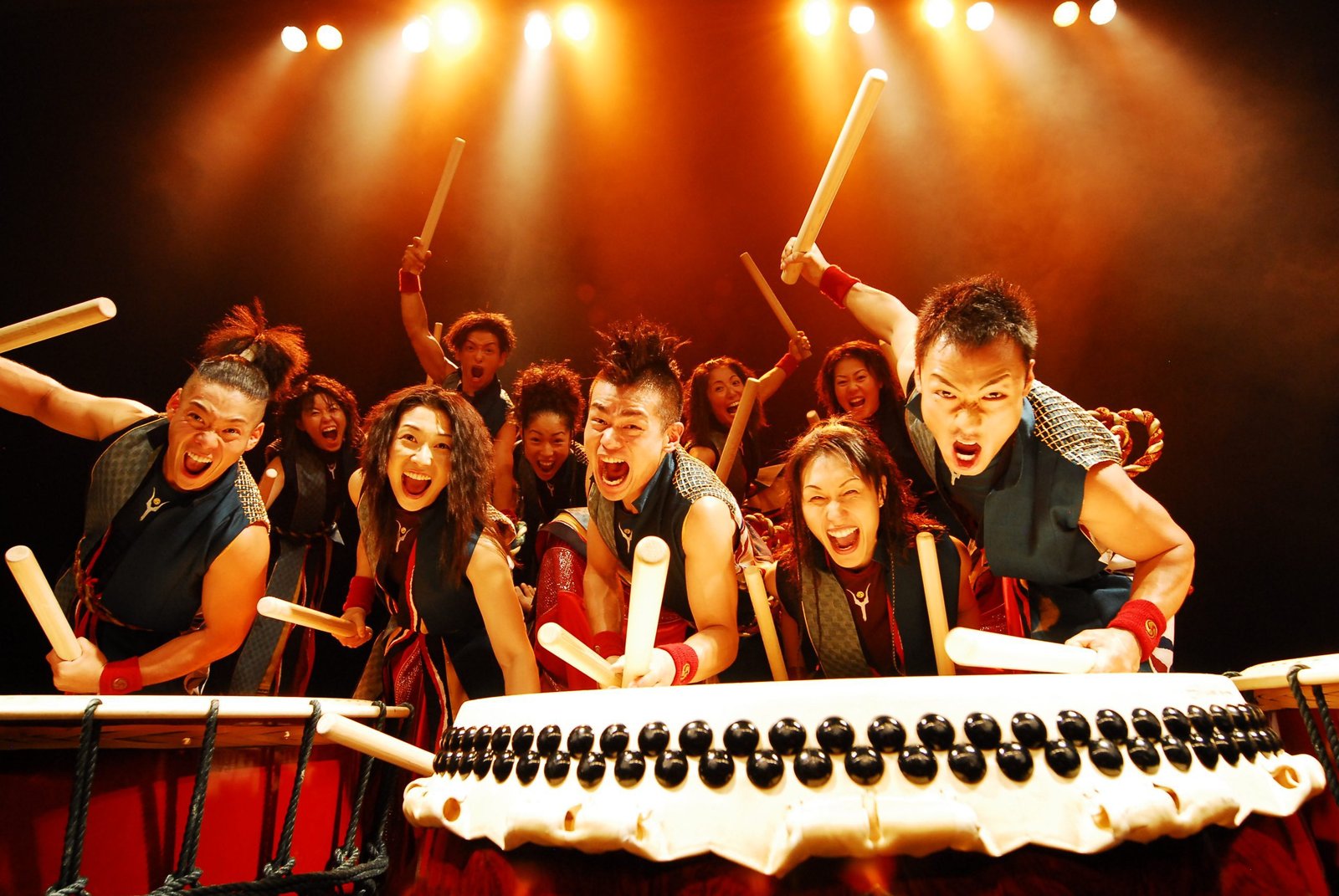Following a successful tour in 2015, the Yamato Drummers of Japan returned to the UK this spring, ditching the blossoming cherry trees for the theatre stages of British towns and cities.
The tour kicked off in London, where they played each night for over 10 days, between the 14th to 25th March. Luckily, that was enough time for us to be able to catch them in between rehearsals and performances and discover more about who they are and what they do.
Who are the Yamato Drummers?
“Back in 1993, Yamato found one big Taiko drum in a shrine.
Yamato created one song for the festival of the shrine. That was our starting point. Since then, we have visited 53 countries and performed more than 3,500 shows all over the world.
Yamato uses traditional Japanese Instruments. However our goal is not to simply create traditional music, our music is also modern and composed by our artistic director Masa Ogawa.
With a lot of respect to the Japanese tradition, Yamato seeks to create something totally new.
We also have strong female drummers, which traditional drumming groups do not have. The female drummers are as powerful as the male drummers”!
How do you become a Yamato drummer?
“We have no auditions to become a Yamato drummer. When someone wants to join us, we tell them just try to stay with us for a few days. Then, if they can stay with us without any stress, they can become a member of Yamato. It is not easy to live together without any free time; we always stay together and we practice a lot”.
Both women and man are part of the collective. What is the training and how long does it last?
“Members of Yamato are always training. The important things are to gain stamina mentally and physically and obtain the right techniques for good drumming; specifically, running 10km in the morning, weight training in the morning into the afternoon and then drumming practice from afternoon to midnight. Training and practice are devoted to more than 12 hours a day. We just practice and practice except for making time to eat, or go to the bathroom”!
https://www.youtube.com/watch?v=VHLc_lOmVuo
What is Taiko?
“The Taiko drum was imported from other Asian countries in the 5th or 6th century, with Buddhism.
There are different types of drums for Taiko. For example, the smallest one is called Shimedaiko. Its diameter is 30cm and the weight is more than 10kg. Our biggest drum is called “O-daiko” it’s so big! The diameter is almost 2m and weight more than 500kg!
There are about 40 drums we use on stage. Yamato aims to create a big vibration between the audience and the drummers, so they feel the power of the beats as well as hear them!
The sound of Taiko is considered to have power for healing the mind, and it has been used in the past as therapy. There are some children and babies who fall asleep feeling the sound of Taiko. They might remember the sound of their mother’s heart when they hear the drums.
Drumming Taiko is becoming a very popular activity now in Japan. There are more than 10,000 Taiko groups in Japan, plenty of them are new and mainly perform at festivals in their home cities and towns”.
Playing Taiko is a very physical experience. They can weigh over 500 kg and incredible strength is needed to play them. When people see you perform they not only come to enjoy the music but also to see the very elaborate choreographed performances which the drummers put on. Has taiko playing always been like this or are such choreographies your way to interpret such traditions?
“Drumming Taiko is just like playing sports. Human energy itself creates the sound by releasing the energy from inside the body onto the drums.
We recognize that we have to respect the tradition of the drums, but we also want to create work without barriers for the audience. We trust that the ancient tradition can live in the modern expression”.
Yamato is an old name for the whole of Japan and also the name for the dominant native ethnic group of Japan. Why did you choose such a name?
“One day after a small performance in Japan in the first year of Yamato, one of the editors from a local newspaper asked, ‘What is the name of the group?’ At that time there was no name, and I answered ‘Yamato’ simply because it represents a lot.
We live in a small village called Asuka, which is considered as the birthplace of Japan. We believe that we gain spiritual energy from this area and that helps a lot for our creation”.
You create and perform original compositions and stages. Therefore, would you say your way to play the taiko is the traditional one or a modern reinterpretation?
“Even though we use traditional drums, it does not mean our music is traditional. All the music is composed by the group, not just influenced by traditional styles. Furthermore, Wadaiko (Japanese drums) were not actually performed on stage in the old days. Performing with traditional style is not our goal. We consider it is very important for us to recognise our nationality, but, it is also essential for us to know what we can create by utilising Japanese traditional drums”.
Since founding Yamato in 1993, you have performed in over 51 countries. Why do you think people around the world regardless of culture and background, are attracted to taiko and your performances?
“Our main goal is to create one sound. We live together trying to understand each other deeply. It is impossible to create one sound together if our feelings, beliefs and thoughts are totally different. We want to create one sound by eating, laughing and crying together. Yamato’s concert is not just playing Taiko, but showing the human story during a 2-hour performance. We always like to create an entertainment show that is full of dance & drama. In addition, because Yamato is originally from the west side of Japan called Kansai, an area where people are considered more humorous than in other areas, we are more into developing a fun atmosphere through the show than other groups”.
Sometimes you incorporate other Japanese traditional instruments into your performances, such as the shamisen (a Japanese string instrument similar to a tiny guitar), the shakuhachi (similar to a flute) and the koto (similar to a harp). What can you tell us about these particular pieces?
“Our Taiko are roughly divided into four kinds: Miya-daiko, Hirado-taiko, Okedo–daiko and Shime–daiko. The sound and tone differ depending on the size of Taiko we use. We also use Japanese instruments beside the Taiko, such as Chappa, Koto and Shinobue”.
You have opened a taiko school in the Netherlands. Why did you choose that country? How has it been received so far?
“In 1999,Yamato’s first European tour was to the Netherlands. Since then we consider the Netherlands as our base in Europe.
In 2013, Yamato Taiko School was founded, now there are about 200 Dutch people learning Taiko at our school!
We want make sure that Taiko connects people, not with a language, but with the power of the sound that Taiko possesses”.
How would you introduce your performance to someone who never heard about it?
“We believe that Taiko can make people think of Japan. If people could remember Japan by Taiko, that would be our pleasure.
We believe that everyone gets surprised and amused by such a huge sound of the traditional big drum. We believe that Taiko drumming is full of the energy of life, and Yamato is one of the few companies that can fully express it. Putting it simply; Yamato is the energy of you!”
The Yamato Drummers are still on tour, performing throughout April around the UK. The final performance will take place at the Palace Theatre in Manchester on May 1st.


